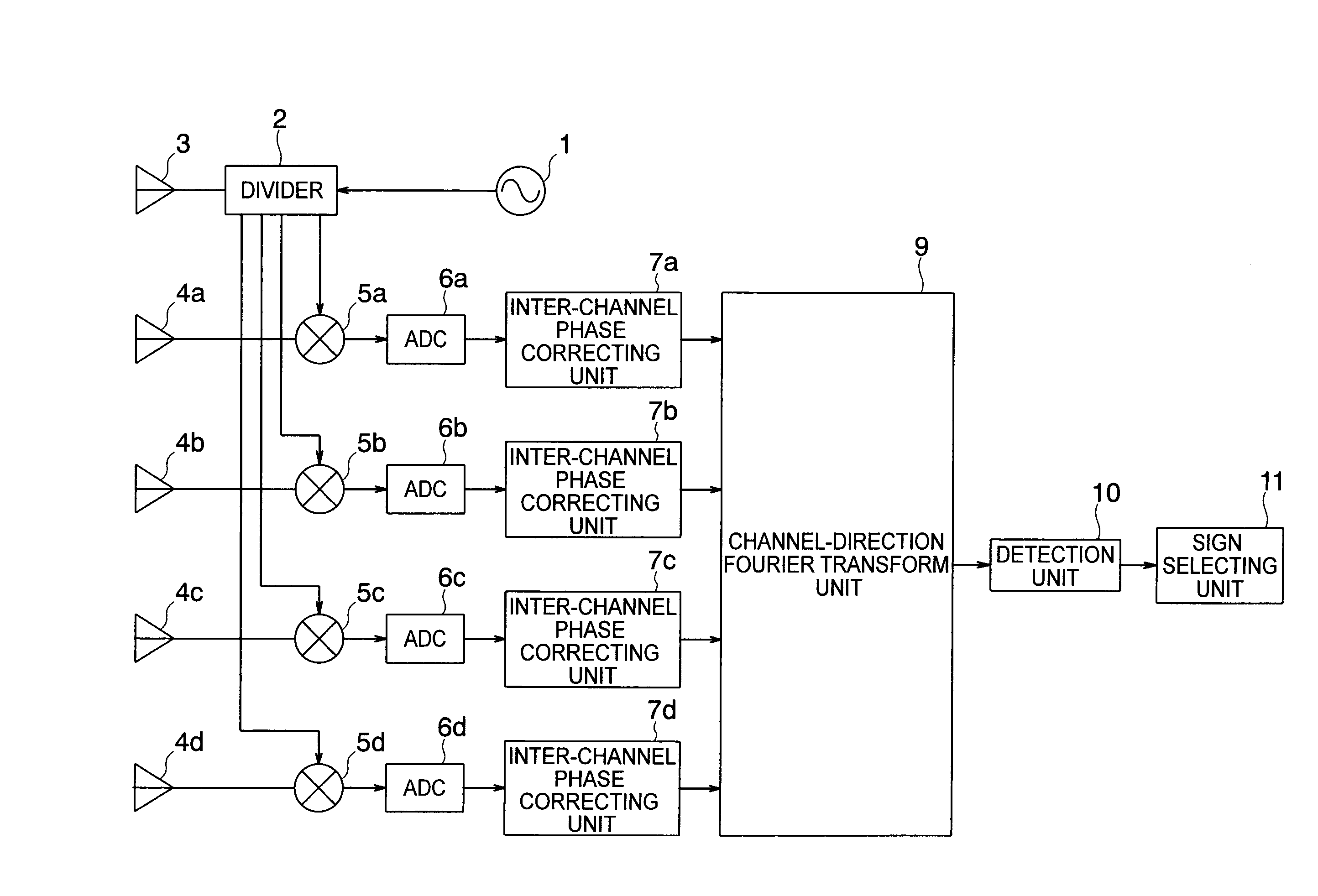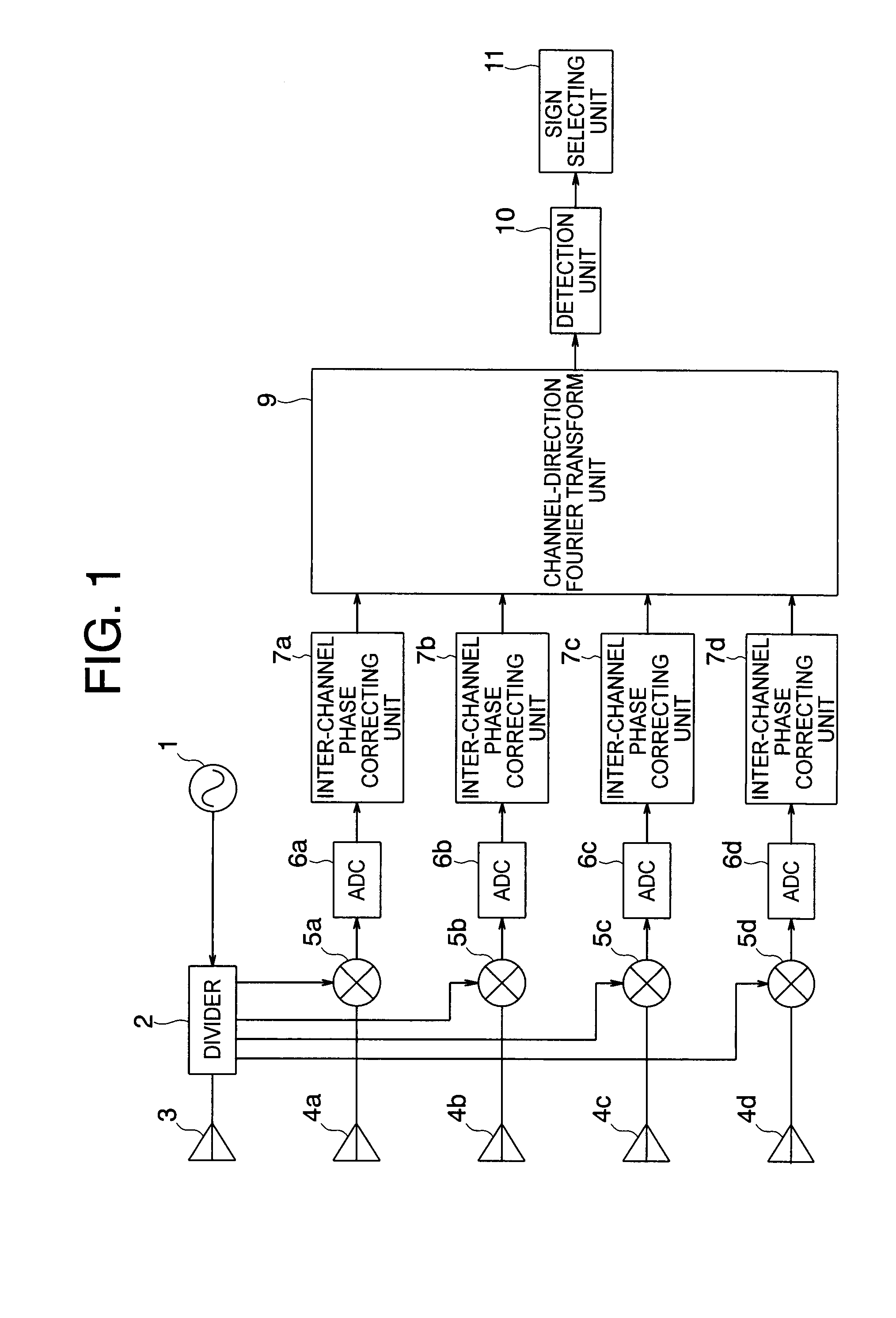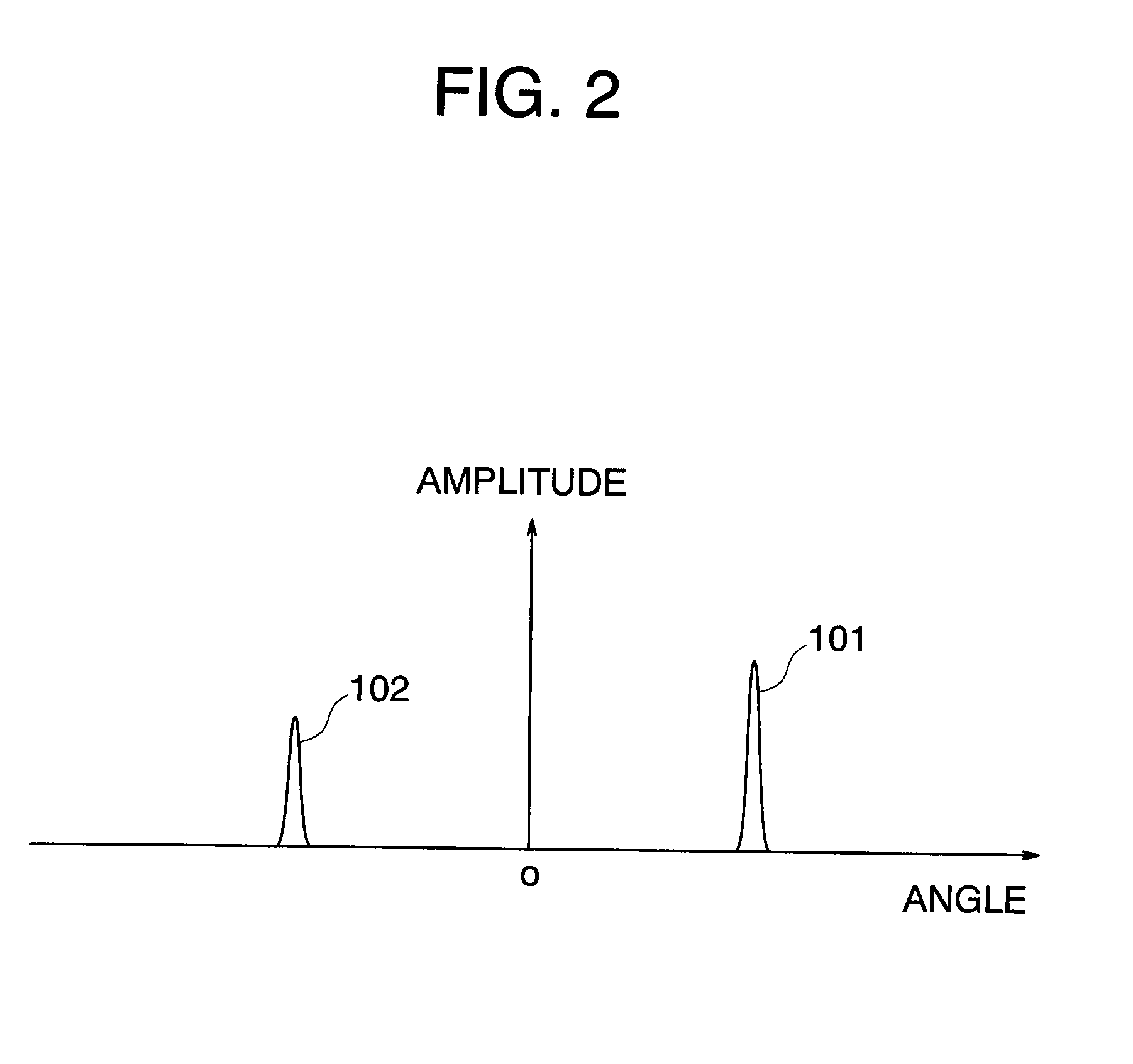Radar device
a technology of a radar and a target angle, applied in the direction of measurement devices, using reradiation, instruments, etc., can solve the problem of not being able to obtain information indicating whether a target angle (defining the front direction as 0 degrees) is positive or negativ
- Summary
- Abstract
- Description
- Claims
- Application Information
AI Technical Summary
Benefits of technology
Problems solved by technology
Method used
Image
Examples
first embodiment
[0025]FIG. 1 is a block diagram illustrating a configuration of a radar device according to a first embodiment of the present invention. The radar device illustrated in FIG. 1 includes an oscillator 1, a divider 2, a transmitting antenna 3, a plurality of receiving antennas 4a to 4d, a plurality of receivers 5a to 5d, a plurality of A / D converters 6a to 6d, and a plurality of inter-channel phase correcting units 7a to 7d. The oscillator 1 generates a transmission wave (wave). The divider 2 serves as a local wave extracting unit which divides the transmission wave output from the oscillator 1 to extract a part of the transmission waves obtained by the division as a local wave. The transmitting antenna 3 serves as a transmitting element. One of the transmission waves output from the divider 2 is input to the transmitting antenna 3, which in turn emits the transmission wave into space. The plurality of receiving antennas 4a to 4d are receiving elements located at the positions differen...
second embodiment
[0061]In the first embodiment described above, the Fourier transform is performed only in the channel direction. In the embodiment described below, the Fourier transform is also performed in a time direction.
[0062]FIG. 4 is a block diagram illustrating a configuration of a radar device according to the second embodiment of the present invention. In the configuration illustrated in FIG. 4 according to the second embodiment, the same components as those of the configuration illustrated in FIG. 1 according to the first embodiment are denoted by the same reference numerals, and the description thereof is herein omitted. The configuration illustrated in FIG. 4 according to the second embodiment differs from that illustrated in FIG. 1 according to the first embodiment in that time-direction Fourier transform units 8a to 8d are further provided between the plurality of inter-channel phase correcting units 7a to 7d and the channel-direction Fourier transform unit 9. Each of the time-directi...
third embodiment
[0072]In the above-described embodiments, an inter-channel phase variation generated in the fabrication process or due to a change with time is corrected to solve the problem of ambiguity in sign in the measurement. However, when the radar device can be fabricated with high accuracy and a change with time can be estimated to be small, it is conceivable to give an inter-channel phase variation in advance to design and fabricate the radar device. Such an embodiment will now be described below.
[0073]FIG. 9 is a block diagram illustrating a configuration of a radar device according to a third embodiment of the present invention. In the configuration illustrated in FIG. 9 according to the third embodiment, the same components as those of the configuration illustrated in FIG. 1 according to the first embodiment are denoted by the same reference numerals, and the description thereof is herein omitted. The third embodiment illustrated in FIG. 9 differs from the first embodiment illustrated ...
PUM
 Login to View More
Login to View More Abstract
Description
Claims
Application Information
 Login to View More
Login to View More - R&D
- Intellectual Property
- Life Sciences
- Materials
- Tech Scout
- Unparalleled Data Quality
- Higher Quality Content
- 60% Fewer Hallucinations
Browse by: Latest US Patents, China's latest patents, Technical Efficacy Thesaurus, Application Domain, Technology Topic, Popular Technical Reports.
© 2025 PatSnap. All rights reserved.Legal|Privacy policy|Modern Slavery Act Transparency Statement|Sitemap|About US| Contact US: help@patsnap.com



